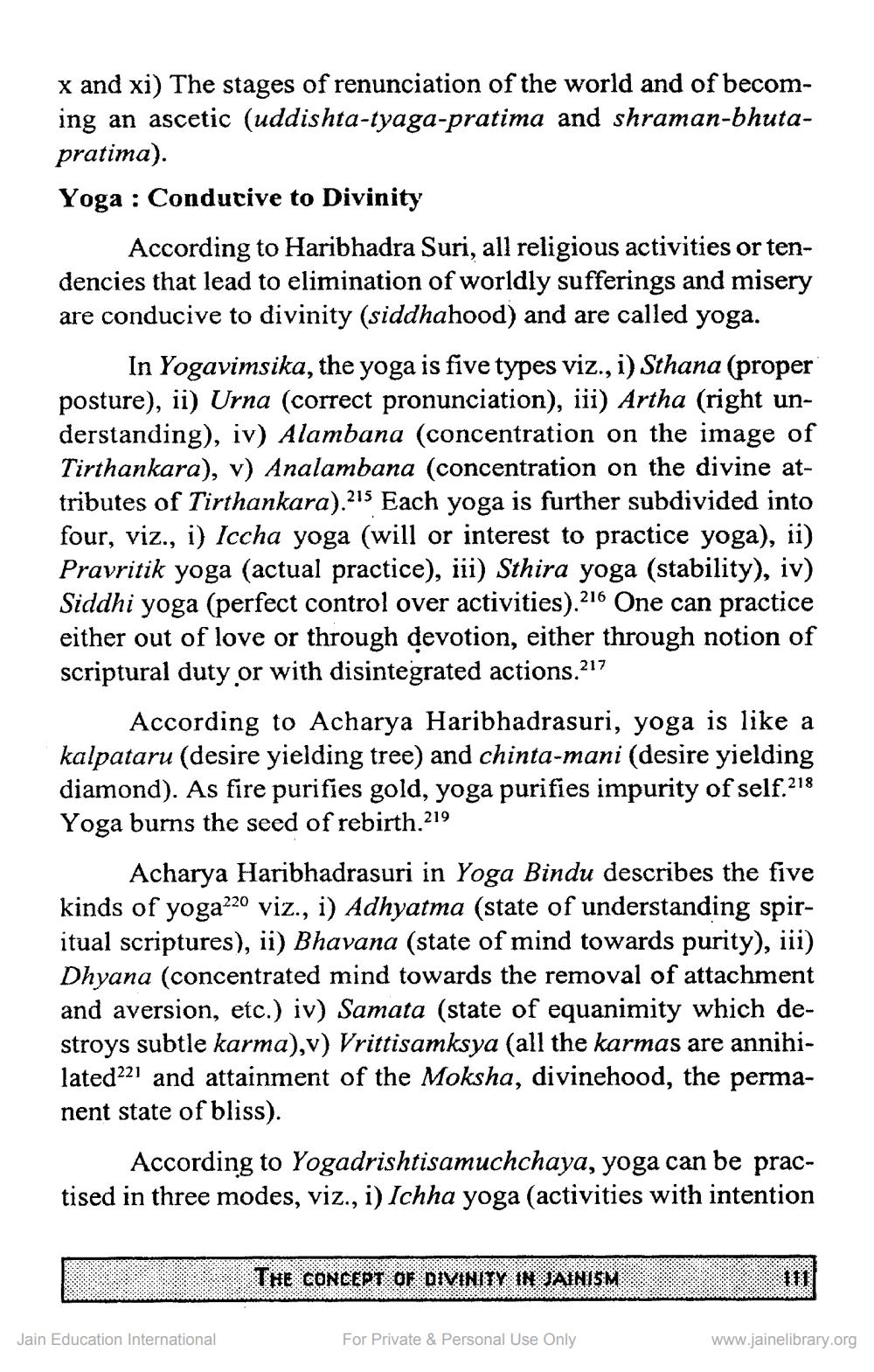________________
x and xi) The stages of renunciation of the world and of becoming an ascetic (uddishta-tyaga-pratima and shraman-bhutapratima). Yoga : Conducive to Divinity
According to Haribhadra Suri, all religious activities or tendencies that lead to elimination of worldly sufferings and misery are conducive to divinity (siddhahood) and are called yoga.
In Yogavimsika, the yoga is five types viz., i) Sthana (proper posture), ii) Urna (correct pronunciation), iii) Artha (right understanding), iv) Alambana (concentration on the image of Tirthankara), v) Analambana (concentration on the divine attributes of Tirthankara).215 Each yoga is further subdivided into four, viz., i) Iccha yoga (will or interest to practice yoga), ii) Pravritik yoga (actual practice), iii) Sthira yoga (stability), iv) Siddhi yoga (perfect control over activities).216 One can practice either out of love or through devotion, either through notion of scriptural duty or with disintegrated actions.217
According to Acharya Haribhadrasuri, yoga is like a kalpataru (desire yielding tree) and chinta-mani (desire yielding diamond). As fire purifies gold, yoga purifies impurity of self.218 Yoga burns the seed of rebirth.219
Acharya Haribhadrasuri in Yoga Bindu describes the five kinds of yoga220 viz., i) Adhyatma (state of understanding spiritual scriptures), ii) Bhavana (state of mind towards purity), iii) Dhyana (concentrated mind towards the removal of attachment and aversion, etc.) iv) Samata (state of equanimity which destroys subtle karma),v) Vrittisamksya (all the karmas are annihilated221 and attainment of the Moksha, divinehood, the permanent state of bliss).
According to Yogadrishtisamuchchaya, yoga can be practised in three modes, viz., i) Ichha yoga (activities with intention
THE CONCEPT OF DIVINITY IN JAINISM
Jain Education International
For Private & Personal Use Only
www.jainelibrary.org




